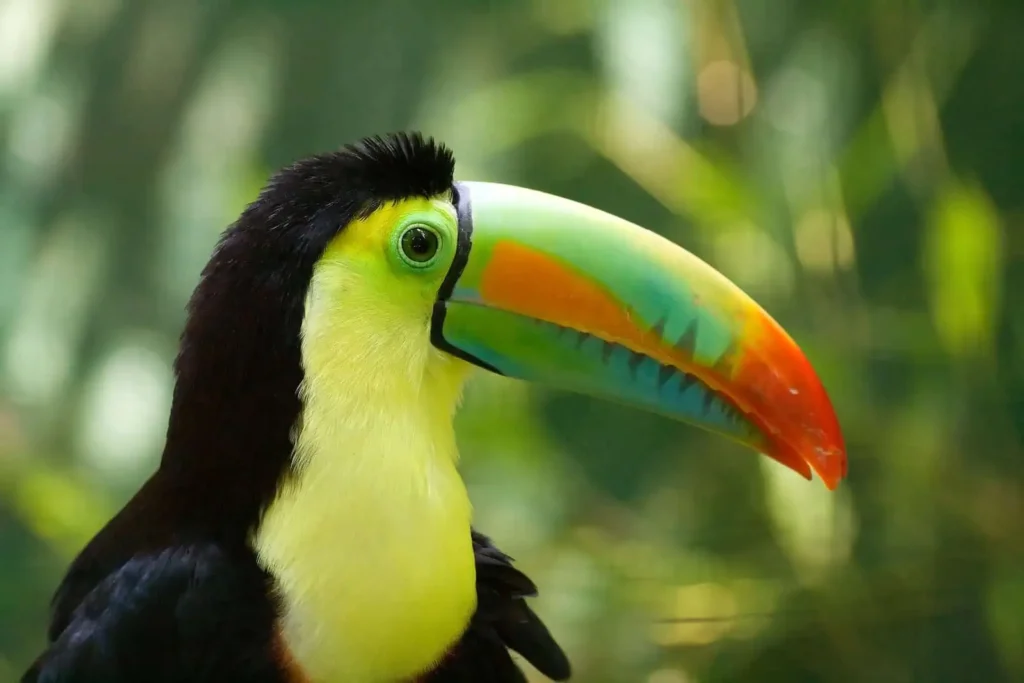If you’re looking to immerse yourself in nature, birding in Belize offers an incredible array of birdwatching opportunities. This tropical gem is a haven for bird lovers, thanks to its diverse landscapes ranging from lush rainforests to serene coastal mangroves. In this blog, we’ll take you on a journey through ten remarkable birds you can spot in Belize, sharing where to find them, their habitats, and a few fascinating tidbits about each.
Here are the Top 15 Must-See Birds of Belize
1. Scarlet Macaw (Ara macao) is among the most beautiful Birds of Belize
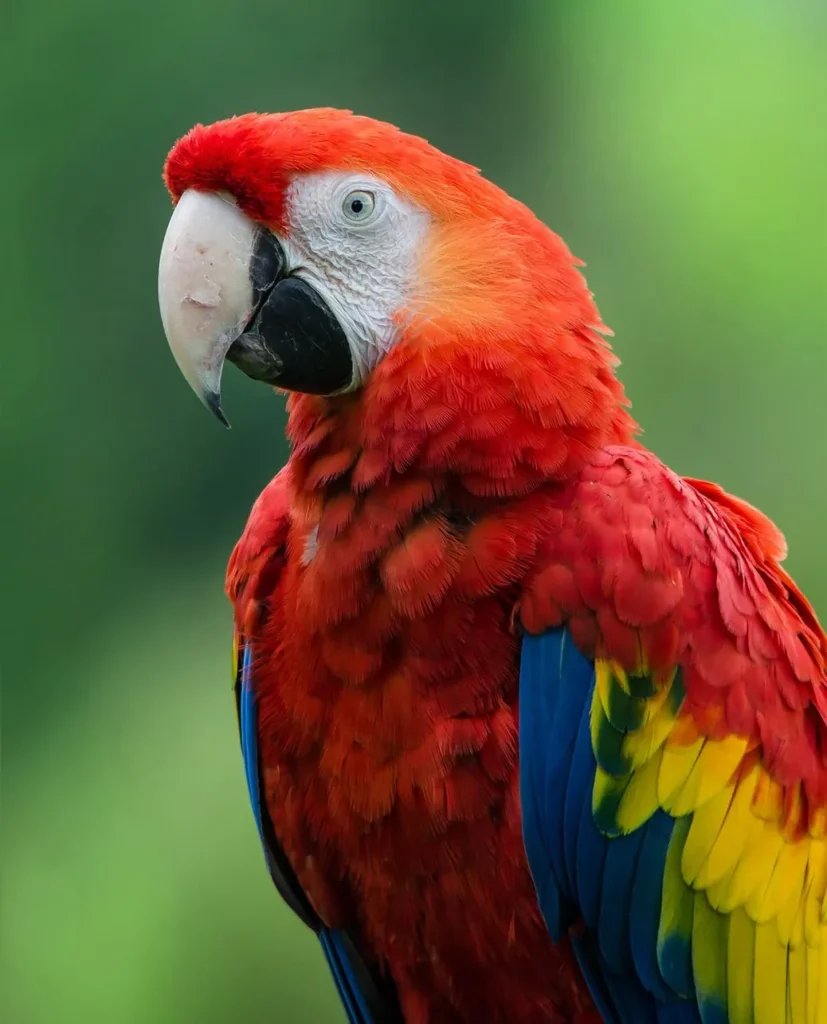
- Habitat: These magnificent birds thrive in tropical rainforests and lowland areas.
- Where to Find: You’ll have the best chance of spotting Scarlet Macaws in the Maya Mountains, especially around the Community Baboon Sanctuary and the Rio Bravo Conservation and Management Area.
- Interesting Fact: With their vibrant red, yellow, and blue feathers, Scarlet Macaws are a feast for the eyes. They’re incredibly social, often seen in pairs or small groups, and can live up to 50 years. Their bright plumage isn’t just for show—it helps them blend in with the colorful rainforest canopy.
2. A birds of Belize list would not be complete without the Keel-Billed Toucan (Ramphastos sulfuratus)
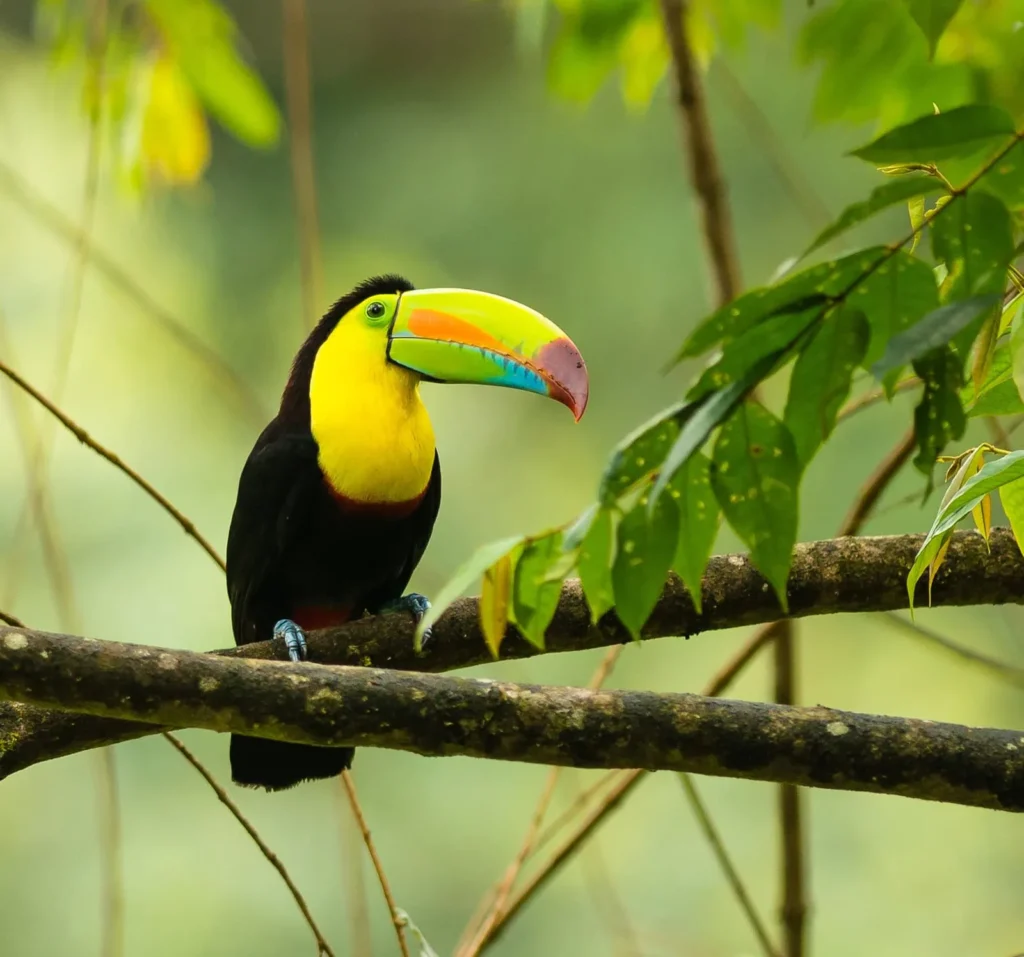
- Habitat: Look for them in lowland rainforests and the edges of forests.
- Where to Find: These toucans are commonly found in the rainforests of the Cockscomb Basin Wildlife Sanctuary and around the Belize Zoo.
- Interesting Fact: The Keel-Billed Toucan is known for its huge, brightly colored bill, which, despite its size, is surprisingly light due to its hollow structure. The bill helps them reach fruit in the highest branches and is also used in social interactions with other toucans.
3. Trogon (Trogon melanocephalus)
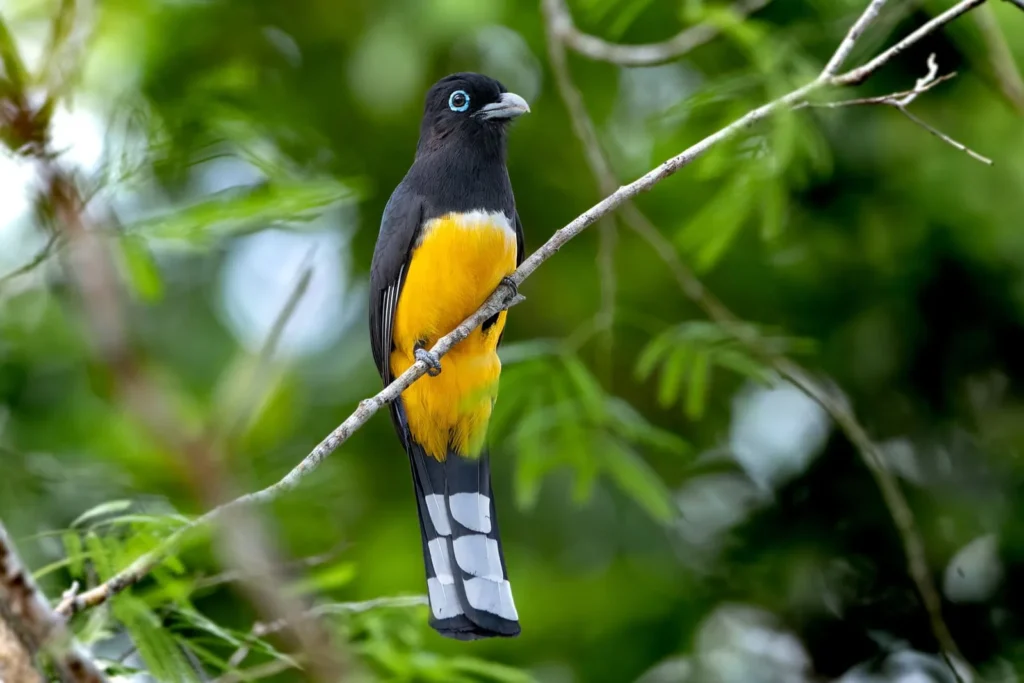
- Habitat: Trogons inhabit tropical and subtropical forests.
- Where to Find: In Belize, you can spot them in the forests of the Cockscomb Basin Wildlife Sanctuary and the Mountain Pine Ridge Forest Reserve.
- Interesting Fact: The Trogon’s vibrant plumage and distinctive calls make it a favorite among birdwatchers. With its brilliant colors and a unique tail, the Trogon is often seen perched quietly, blending into the forest’s dappled light before swooping off to catch insects or small fruit.
4. Blue Heron (Ardea herodias)
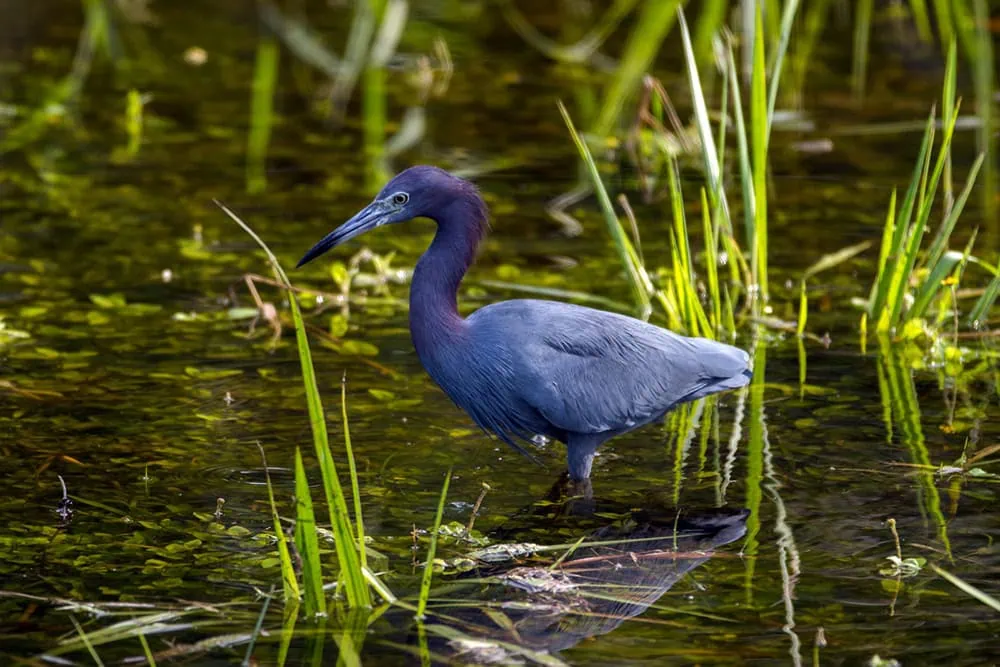
- Habitat: Coastal mangroves and estuaries are where these herons make their home.
- Where to Find: You can spot them in places like the Hol Chan Marine Reserve and along the rivers and lagoons in northern Belize.
- Interesting Fact: The Belizean Heron is a skilled fisherman, often seen wading in shallow waters to catch fish and small crustaceans. Their patience and precision in hunting make them fascinating to watch.
5. Great Egret (Ardea alba)
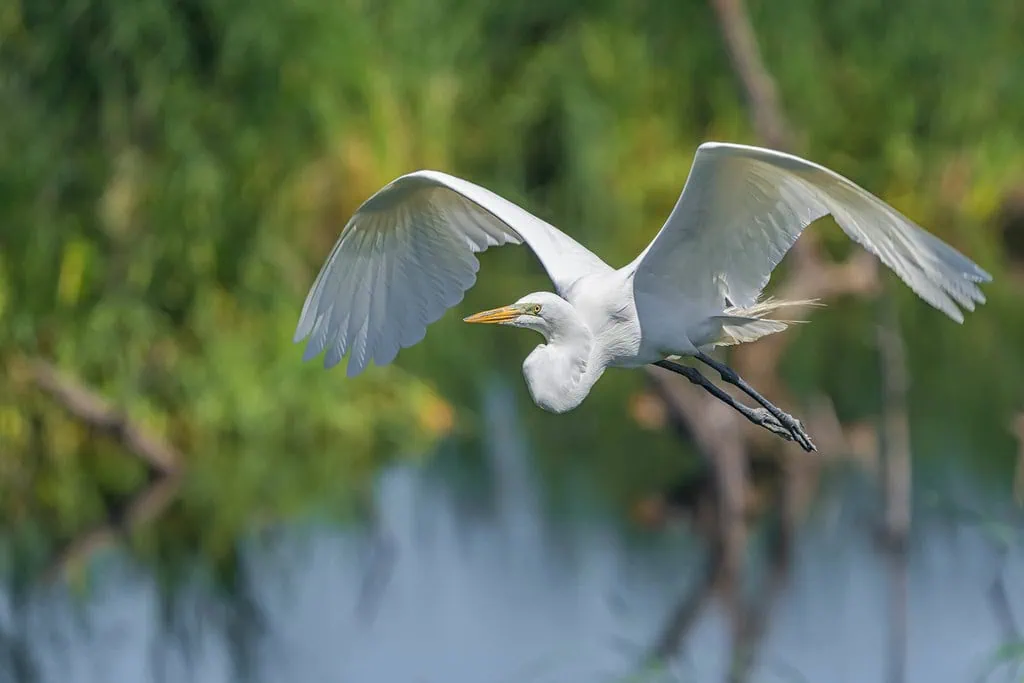
- Habitat: These elegant birds are found in wetlands, marshes, and shallow coastal waters.
- Where to Find: They are common along the Belize Barrier Reef and in various mangrove swamps.
- Interesting Fact: The Great Egret’s all-white plumage and long, slender neck make it one of the most graceful birds in Belize. It’s also a conservation success story, with its populations rebounding thanks to dedicated protection efforts.
6. Green Kingfisher (Chloroceryle americana)
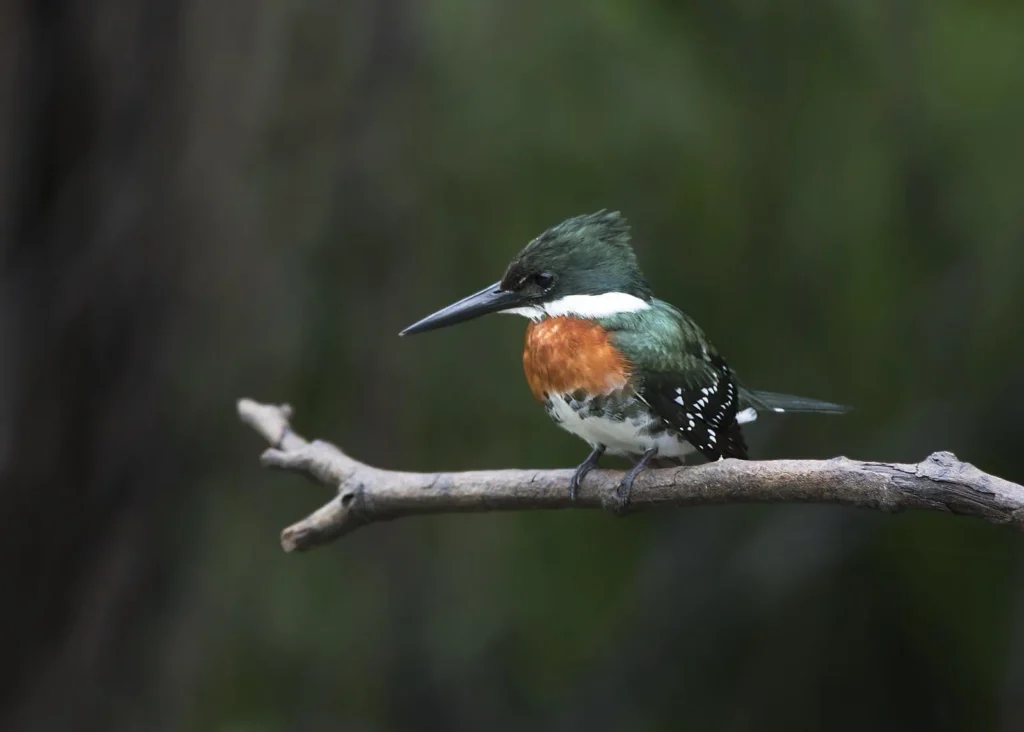
- Habitat: Rivers, streams, and swampy areas are the Green Kingfisher’s domains.
- Where to Find: Look for them along the Macal River and in the wetlands of the Crooked Tree Wildlife Sanctuary.
- Interesting Fact: With its striking emerald green feathers and diving skills, the Green Kingfisher is a true spectacle. It dives headfirst into the water to catch fish, making for some exciting viewing.
7. Blue-Crowned Motmot (Momotus momota)
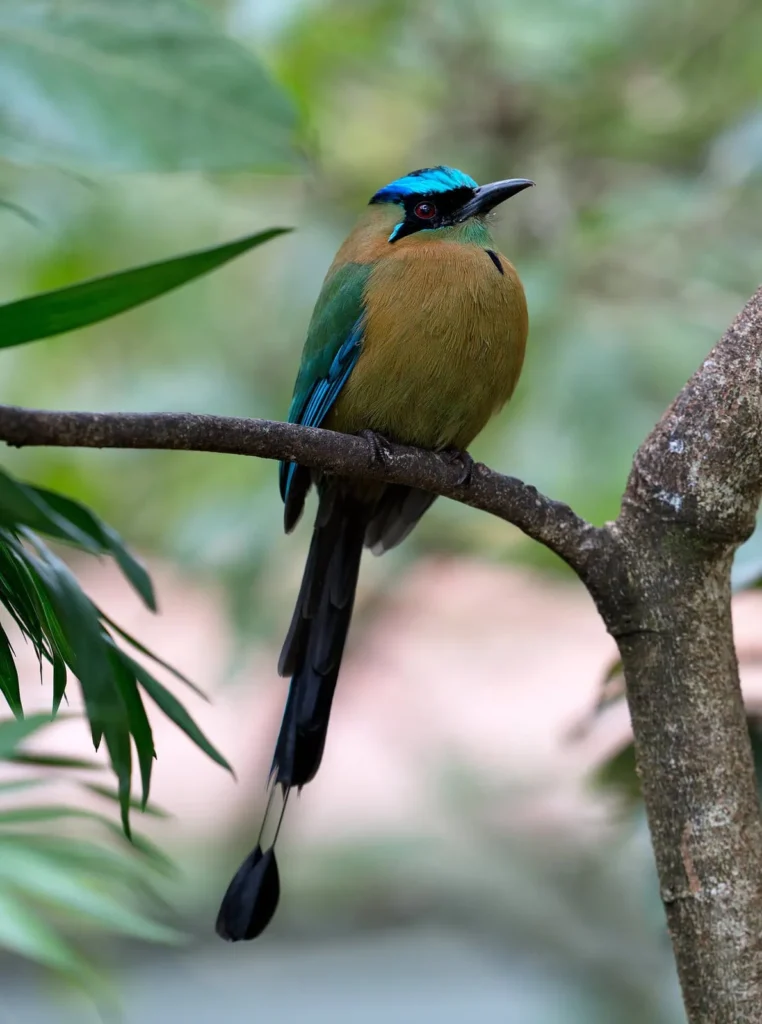
- Habitat: These birds prefer subtropical or tropical dry forests and moist lowland forests.
- Where to Find: You can spot Blue-Crowned Motmots in the broadleaf forests of the Maya Mountains and at the edges of forested areas.
- Interesting Fact: Known for their racket-shaped tail feathers and chattering calls, Blue-Crowned Motmots are quite distinctive. They often sit motionless before darting off in search of insects, making them an interesting bird to observe.
8. Roseate Spoonbill (Platalea ajaja)
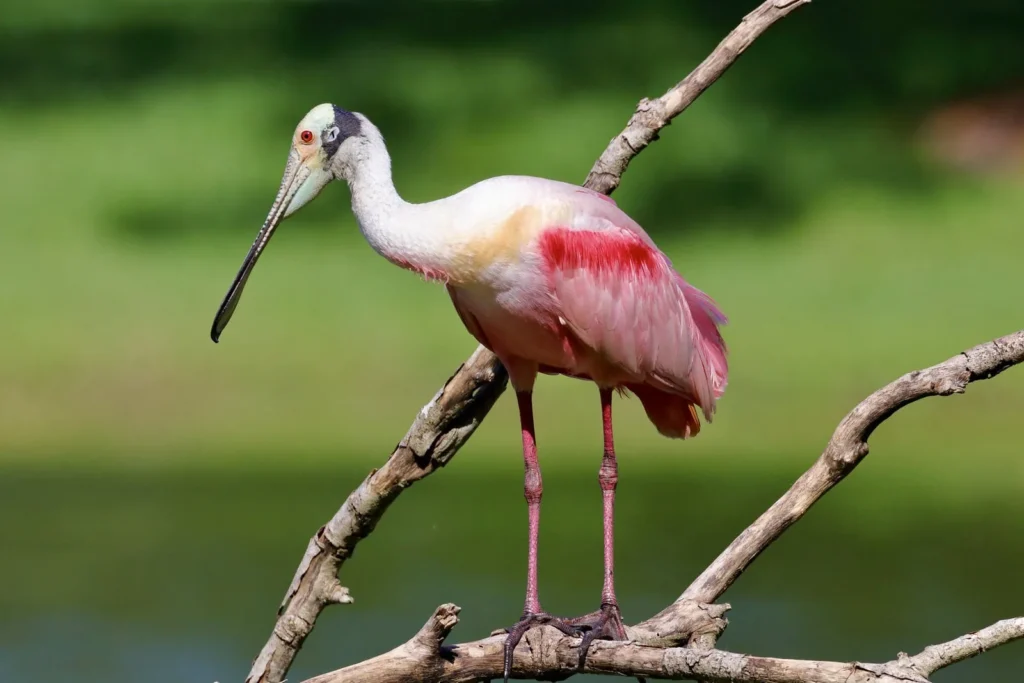
- Habitat: Coastal wetlands, estuaries, and mangrove swamps are ideal for these spoonbills.
- Where to Find: The Roseate Spoonbill is often seen in the coastal areas of Ambergris Caye and around Placencia’s lagoons.
- Interesting Fact: The Roseate Spoonbill’s vibrant pink plumage and distinctive spoon-shaped bill are its trademarks. They use their bill to sift through mud and shallow waters, feeding on fish and small invertebrates.
9. The Great Curassow: A Majestic Forest Dweller of Belize
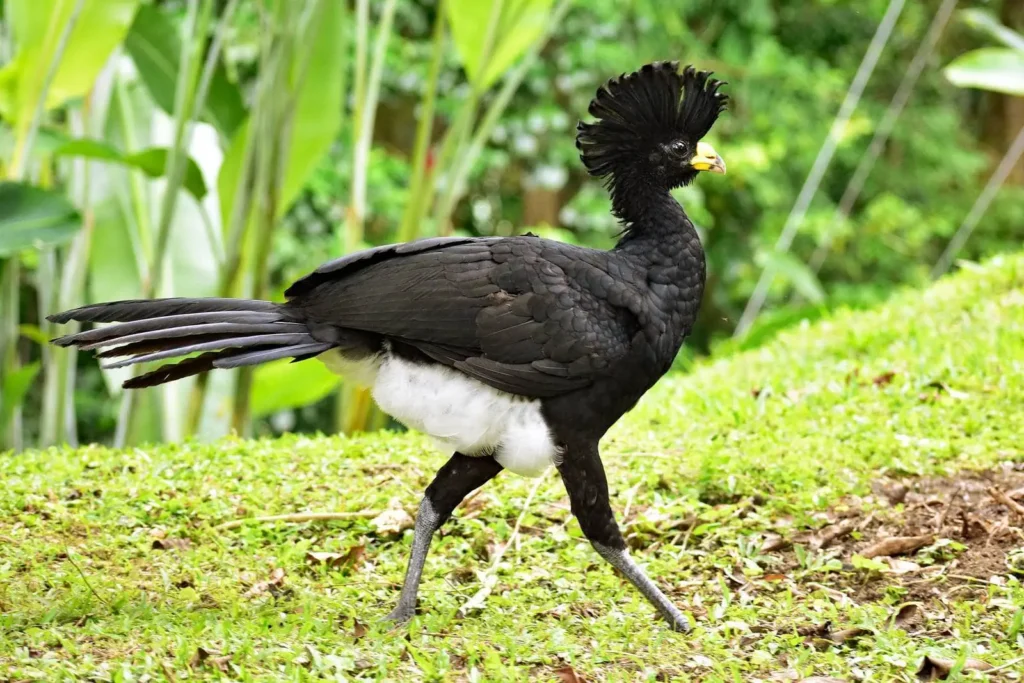
The Great Curassow (Crax rubra) is a remarkable and charismatic bird species found in the forests of Belize. As one of the largest members of the cracid family, the Great Curassow is often regarded as a symbol of Belize’s rich biodiversity. With its striking appearance and elaborate mating rituals, it’s a bird that both birdwatchers and nature enthusiasts are eager to spot.
Habitat and Distribution
The Great Curassow inhabits tropical lowland forests and dense rainforests. In Belize, these magnificent birds are typically found in protected areas such as the Cockscomb Basin Wildlife Sanctuary, which is also renowned for being home to jaguars, and the Mountain Pine Ridge Forest Reserve, where diverse ecosystems support a variety of wildlife. These regions provide the perfect habitat for the curassow, which prefers secluded environments near water sources like rivers and streams.
Birdwatchers visiting Belize’s rainforests may also spot other iconic species in these ecosystems, making it a prime destination for observing Central American birdlife.
Physical Description and Behavior
One of the most distinguishing features of the Great Curassow is its striking plumage. Males display glossy black feathers, along with a dramatic spiral crest on their head, while females are generally brown with a more subtle, patterned appearance. During the breeding season, males engage in elaborate courtship displays, raising their crest feathers and emitting deep, booming calls to attract females. The curassow’s calls are a defining feature, often heard echoing through the forest as part of their territorial behavior.
Due to their elusive nature, the Great Curassow is considered a challenging species to observe, making any sighting a rare and rewarding experience for birdwatchers in Belize.
Conservation Efforts and Challenges
Although the Great Curassow is not currently classified as critically endangered, it faces ongoing threats from deforestation and hunting, which impact its habitat and populations. Conservation programs in Belize, particularly in areas like the Cockscomb Basin Wildlife Sanctuary, work to protect the Great Curassow and other species of the cracid family through habitat restoration, anti-poaching efforts, and local community engagement.
The Belize Audubon Society, alongside other wildlife protection agencies, continues to monitor the curassow’s population and promote eco-tourism practices that support the conservation of Belize’s wildlife.
10. Boat-Billed Heron: Belize’s Unique Night Hunter
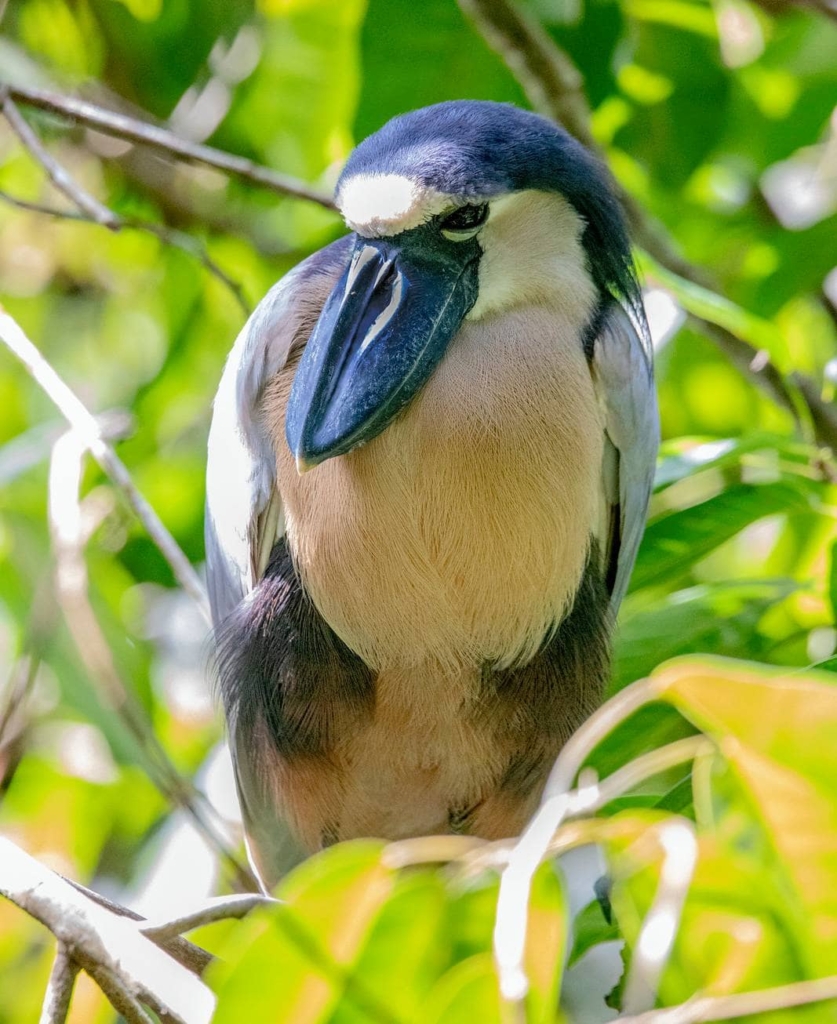
The Boat-Billed Heron (Cochlearius cochlearius) is a distinctive and fascinating bird found in Belize’s coastal mangroves, wetlands, and estuaries. Recognizable by its wide, flat, boat-shaped bill, this nocturnal bird is most active during the evening and early morning hours. The heron hunts in shallow waters, using its bill to scoop up small fish, crustaceans, and aquatic insects. Its dark plumage and secretive nature make it a rare sight, often blending into the shadows of the mangrove forests. For birdwatchers seeking a unique experience, spotting the Boat-Billed Heron is a thrilling challenge in Belize’s diverse wetland habitats.
11. Yellow-Winged Tanager: A Vibrant Jewel of Belize
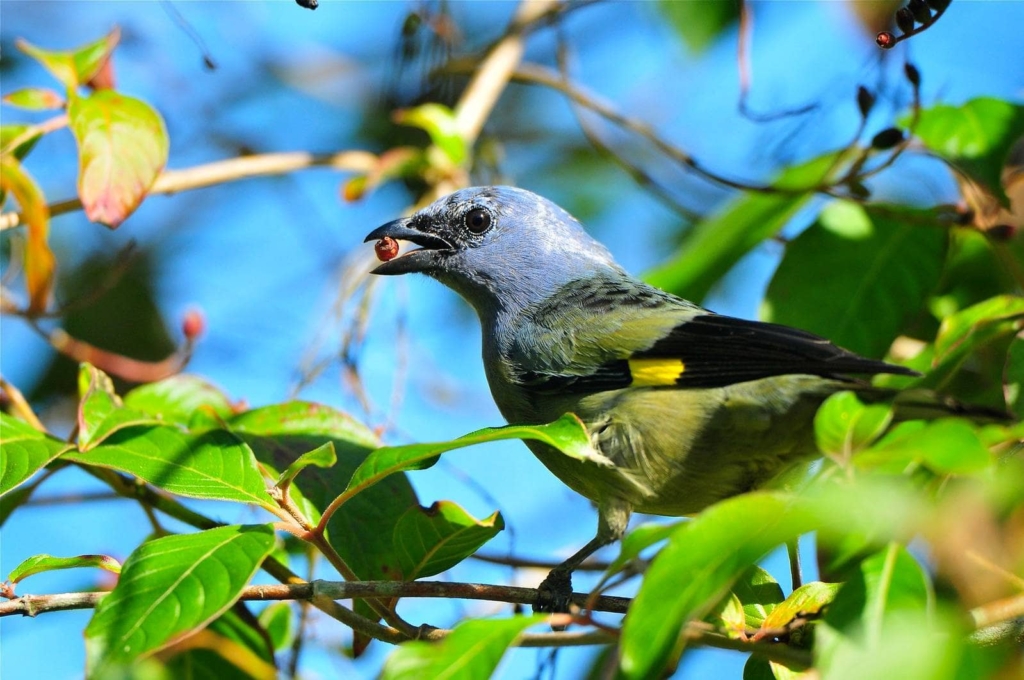
The Yellow-Winged Tanager (Thraupis abbas) is a striking bird found in the forests of Belize, known for its vibrant plumage. With bright yellow wings contrasting against its rich blue body, this tanager is a true spectacle in the treetops. Typically spotted in subtropical and tropical forests, particularly around the Maya Mountains and Cockscomb Basin, it feeds on fruit, nectar, and insects. The Yellow-Winged Tanager is often seen in small flocks, flitting between branches, adding a burst of color to the dense canopy. For birdwatchers, this beautiful tanager is a must-see species, offering both a visual treat and a glimpse into Belize’s lush, biodiverse ecosystems.
12. Orange-Breasted Falcon (Falco deiroleucus)
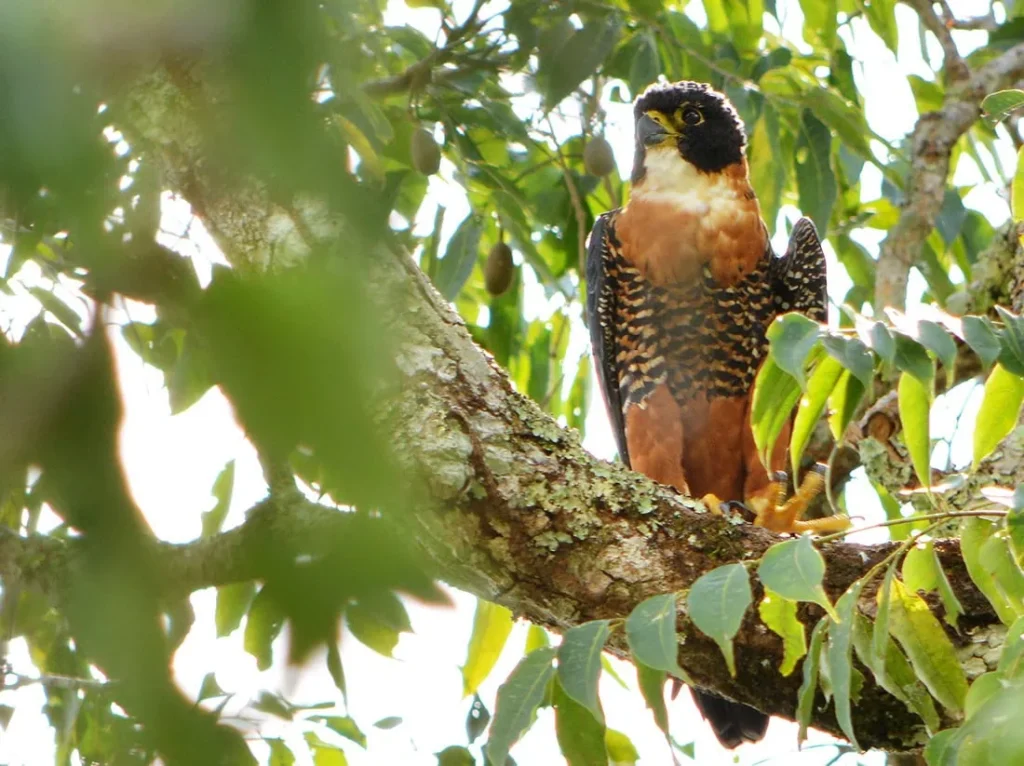
- Habitat: Forested cliffs and highland regions are where you’ll find this elusive raptor.
- Where to Find: Look for them in the rugged terrain of the Mountain Pine Ridge Forest Reserve and along the cliffs of the Maya Mountains.
- Interesting Fact: The Orange-Breasted Falcon is a rare sight, prized for its striking orange breast and powerful hunting skills. Spotting one is a special treat for avid birdwatchers.
13. Yucatan Jay (Cyanocorax yucatanicus)
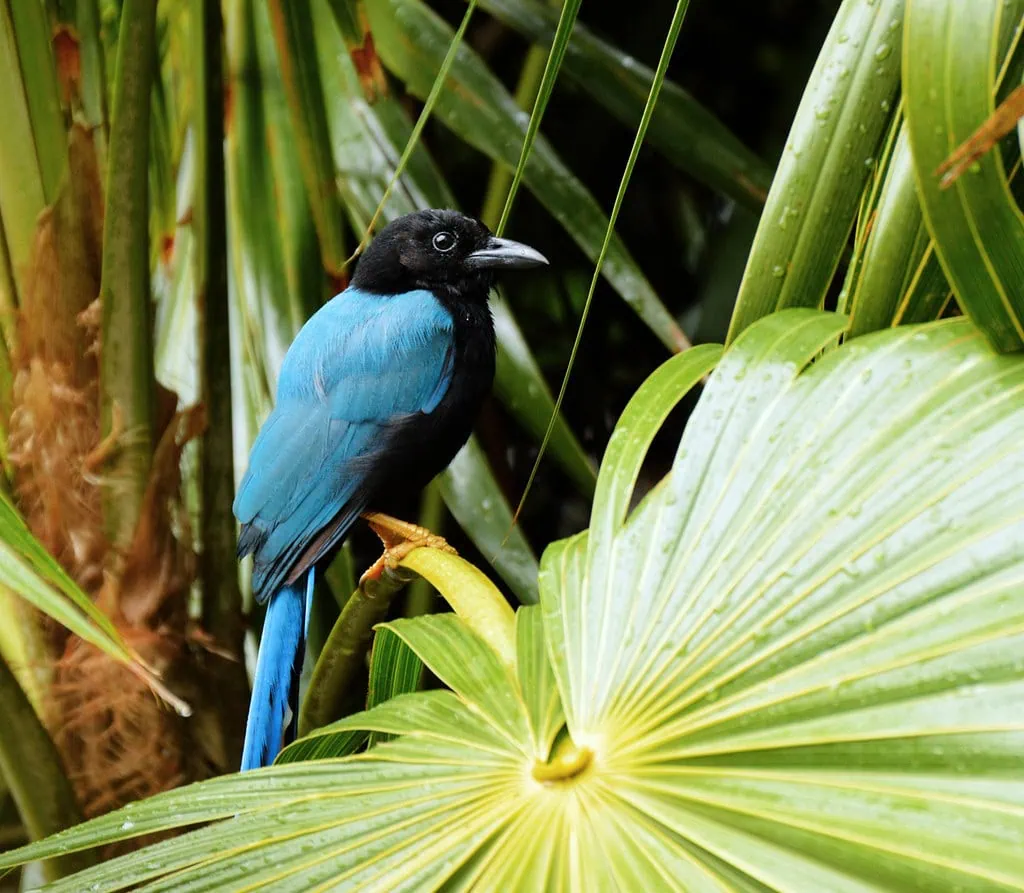
- Habitat: These jays are found in lowland forests and open woodlands.
- Where to Find: They can be spotted in the forests around the Rio Bravo Conservation and Management Area and throughout the Yucatán Peninsula.
- Interesting Fact: The Yucatán Jay is known for its vivid blue plumage and white markings. They’re social birds, often seen in lively, noisy groups that make their presence known in the forest.
Belize’s diverse ecosystems provide a perfect backdrop for a thrilling birdwatching experience. Whether you’re wandering through dense rainforests or exploring coastal mangroves, you’re sure to encounter some of these extraordinary species. Remember to bring your binoculars and a good field guide, you wouldn’t want to miss the chance to see these magnificent birds in their natural habitat!
Best Birdwatching Locations in Belize
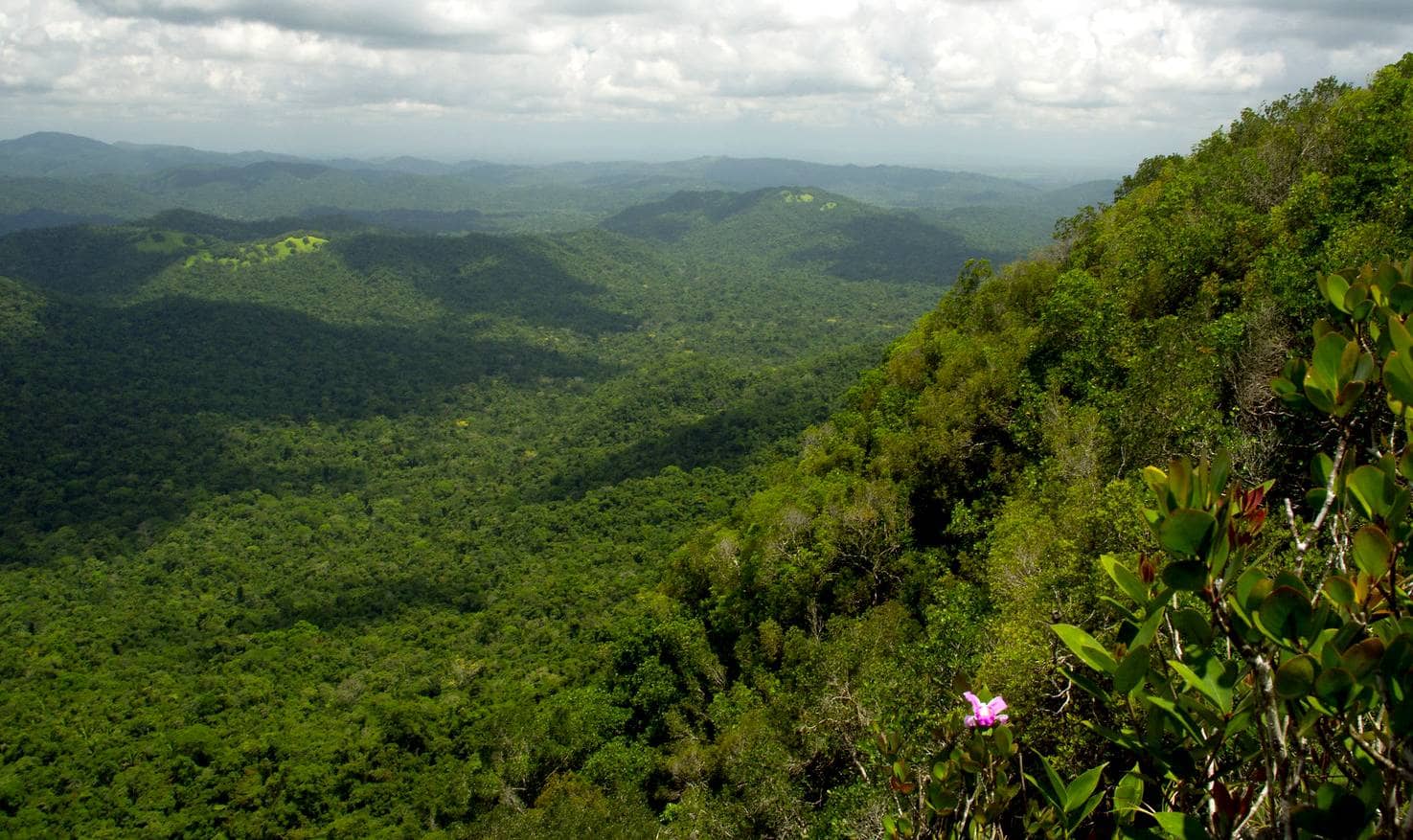
Belize offers a diverse range of birdwatching environments, from rainforests to coastal areas. Here are some of the top birdwatching locations you should consider visiting:
- Cockscomb Basin Wildlife Sanctuary: Known for its jaguars, this sanctuary also offers rich birdlife, including the Keel-Billed Toucan and the Black-Headed Trogon.
- Maya Mountains: The perfect location for spotting Scarlet Macaws and other tropical species.
- Crooked Tree Wildlife Sanctuary: Famous for its wetland habitats, it’s a hotspot for waterfowl and migratory birds like the Green Kingfisher.
- Hol Chan Marine Reserve: Along with coral reefs, you’ll find a wide range of waterbirds like the Great Egret and Blue Herons.
Conservation Efforts for Birds in Belize
Belize has made significant strides in bird conservation, with several protected areas and sanctuaries dedicated to preserving the country’s diverse bird species. Some of the key efforts include:
- The Scarlet Macaw Conservation Project: A program aimed at protecting the Scarlet Macaw through habitat restoration and community involvement.
- Community Baboon Sanctuary: A successful community-led initiative that works to protect the Scarlet Macaw and other species through sustainable practices and education.
- Belize Audubon Society: Actively works to preserve Belize’s birdlife by maintaining protected areas and educating the public about conservation.
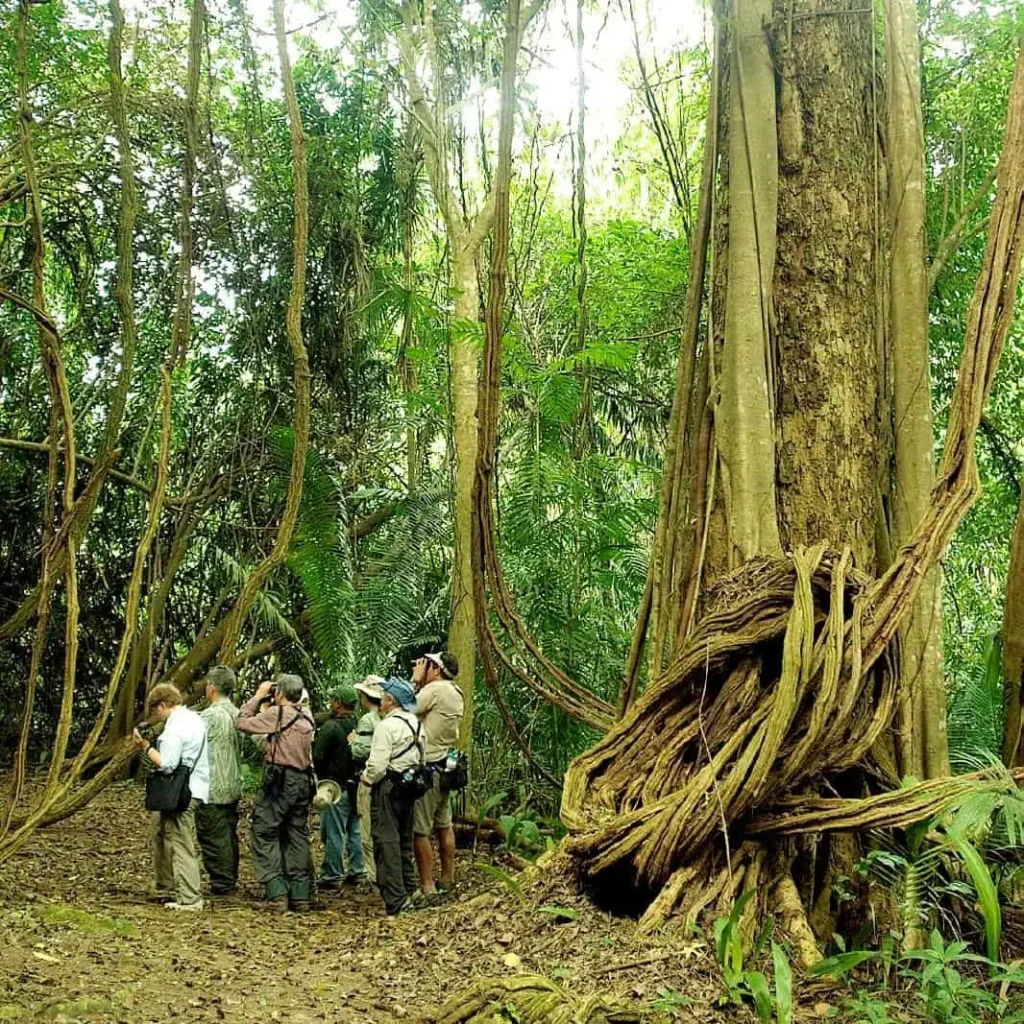
7 key locations in Belize regarded as Important Bird Areas (IBAs):
- Blue Hole Natural Monument
- Cockscomb Basin Wildlife Sanctuary
- Crooked Tree Wildlife Sanctuary
- Guanacaste National Park
- Half Moon Caye Natural Monument
- St. Herman’s Blue Hole National Park
- Victoria Peak Natural Monument
Best Time for Birdwatching in Belize
The best time to visit Belize for birdwatching is during the dry season, which runs from November to April. During this time, the weather is more predictable, and you can spot migratory birds such as the Roseate Spoonbill.
- Wet Season (June – October): Although it’s rainy, the wet season is also a great time for birdwatching as the lush rainforests come alive, and you may catch sight of rare species.
- Peak Migration Period: Birdwatchers seeking migratory species should plan their visit around spring migration (March-April) and fall migration (September-November).
Birdwatching Tips for Beginners
Birdwatching in Belize can be a rewarding experience, but it can also be a bit overwhelming if you’re new to the activity. Here are some tips to get started:
- Bring the Right Gear: A good pair of binoculars, a field guide specific to Belize’s birds, and a notebook to jot down your observations.
- Learn to Identify Bird Songs: Many birds in Belize have distinctive calls. Learning their songs can help you locate them even if you don’t see them right away.
- Patience Is Key: Birds are often elusive and will blend into their surroundings. Take your time, and enjoy the experience of being in nature.
Essential Birdwatching Gear for Your Belize Trip
Birdwatching in Belize requires some specific gear to ensure a successful and comfortable experience. Consider bringing:
- Binoculars: High-quality, waterproof binoculars are a must for spotting birds at a distance.
- Camera with a Zoom Lens: Belize is home to stunning birds that make for incredible photos. A camera with a good zoom lens will help capture them up close.
- Field Guide: A birdwatching field guide specific to Belize or Central America will help you identify species more easily.
Where to stay for a Belize Birding Vacation?
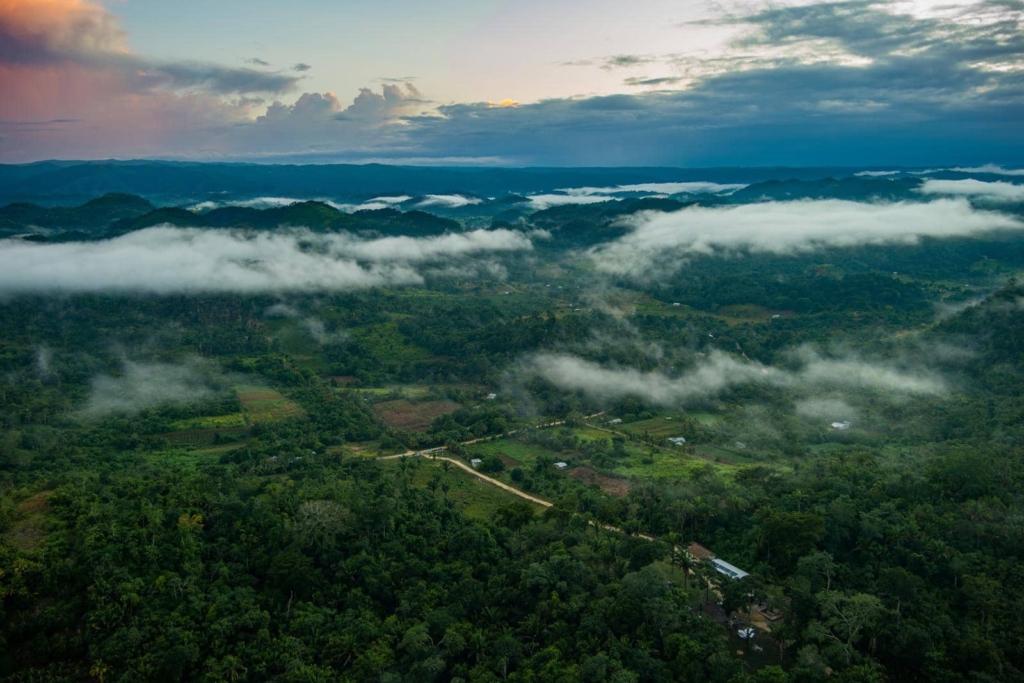
Ready to explore Belize’s best birdwatching locations? Book your stay at the Belize Luxury Villas at NOUR and immerse yourself in the stunning birdlife of Belize. Our villas offer the perfect base to experience Belize’s rich ecosystems and vibrant bird species up close. Don’t miss out on the ultimate birdwatching adventure in Belize!
Interested in other experiences? Our Things To Do In Belize guide will help you explore other awesome options.
